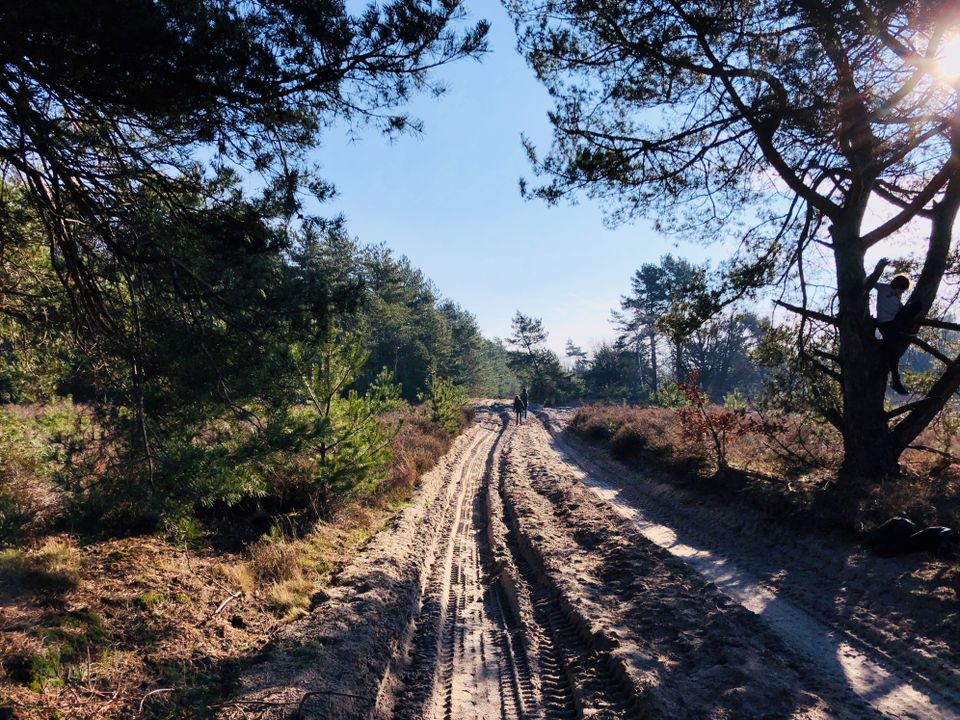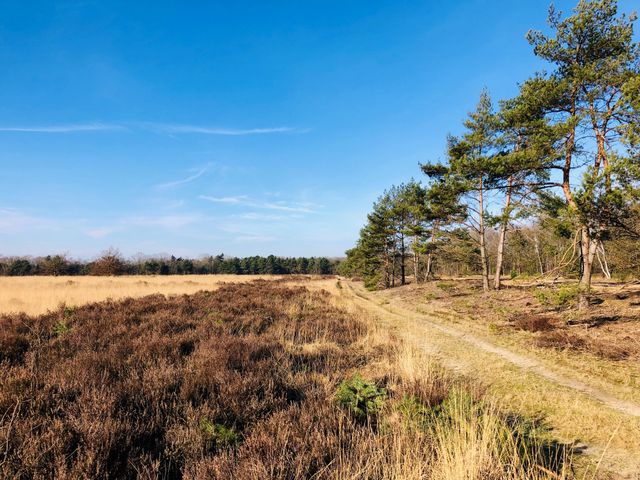Oirschotse Heath

The Oirschotse Heide is a large heath and drifting sand area. What makes it unique is that this terrain is also used as a military training ground. Visit the landscape artwork Trench for Peace here, a trench disguised as a peace sign.
Military training ground The Oirschotse Heide is used as a military training ground but is also a natural area. If you want to enter the area, be cautious: entering is at your own risk. You may encounter practicing soldiers racing by in heavy military vehicles. You can see wide tracks as evidence of this in the sand. They also practice with items such as live ammunition, signal flares, tripwire lights, blank cartridges, and smoke, possibly with tear gas.
The Oirschotse Heide w…
The Oirschotse Heide is a large heath and drifting sand area. What makes it unique is that this terrain is also used as a military training ground. Visit the landscape artwork Trench for Peace here, a trench disguised as a peace sign.
Military training ground The Oirschotse Heide is used as a military training ground but is also a natural area. If you want to enter the area, be cautious: entering is at your own risk. You may encounter practicing soldiers racing by in heavy military vehicles. You can see wide tracks as evidence of this in the sand. They also practice with items such as live ammunition, signal flares, tripwire lights, blank cartridges, and smoke, possibly with tear gas.
The Oirschotse Heide was formerly known as 'the White Mountains' and was a much-visited recreational area that was compared to the Loonsche and Drunensche dunes. However, there was already an army camp early on, which grew larger and became increasingly intensively used.
The nature Unfortunately, the heath has become overgrown and dried out. You can find breeding birds such as nightjar, black grouse, stonechat, whinchat, and crossbill. Amphibians include the alpine newt, European green toad, and natterjack toad. The area is a rich habitat for butterflies, including the silver-studded blue, marsh fritillary, common blue, small heath, large skipper, and brown hairstreak. The rare cone-headed grasshopper has also been observed.




